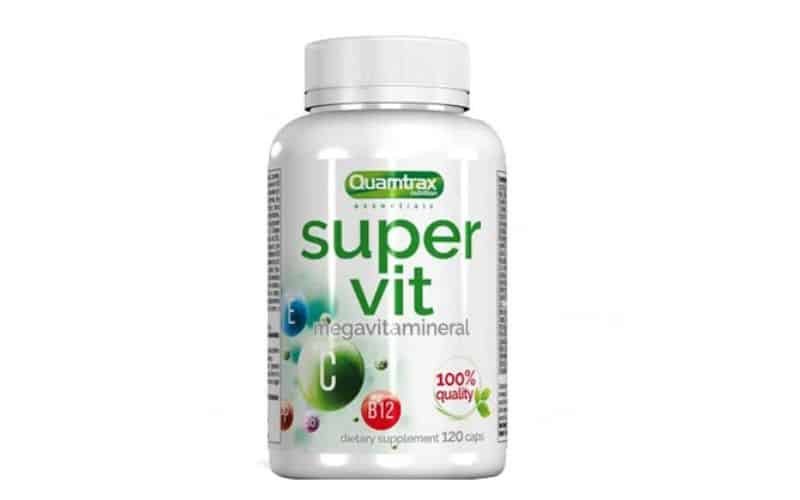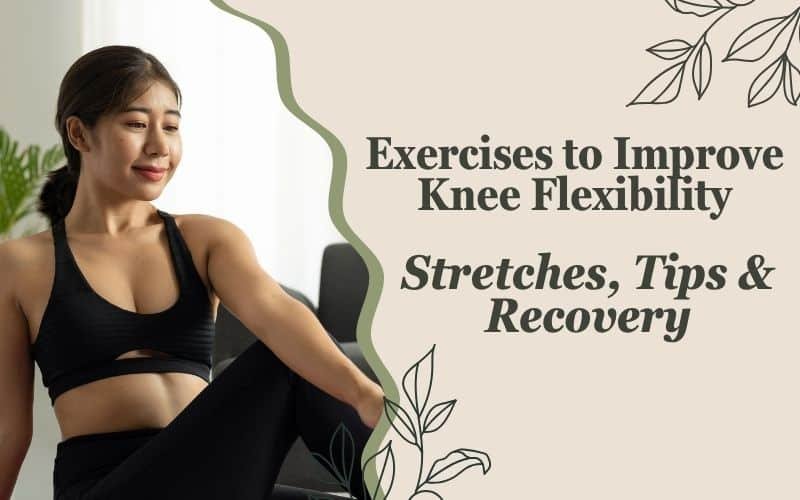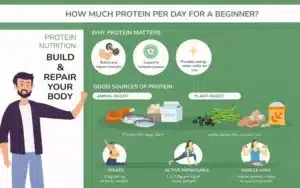No products in the cart.
Return To ShopExercises to Improve Knee Flexibility | Stretches, Tips & Recovery
Knee flexibility is crucial for athletes, gym-goers, and even those who simply want to move without stiffness in daily life. Flexible knees support better movement patterns, reduce injury risk, and enhance overall mobility. But improving flexibility is not just about stretches — it requires the right exercises, nutrition, and recovery. In this guide, we’ll break down the best exercises to improve knee flexibility, along with expert recovery tips and supplements to support long-term joint health.
Why Knee Flexibility Matters
Strong and flexible knees are essential for sports performance, weightlifting, and everyday activities like walking and climbing stairs. Limited flexibility can cause stiffness, discomfort, and a higher risk of injuries such as ligament strains. Moreover, athletes in sports like cricket, football, and kabaddi depend heavily on joint mobility for peak performance.
For overall wellbeing and to prevent joint-related issues, many athletes also focus on holistic care, supported by the right health & wellness routines.

Best Warm-Up Before Knee Flexibility Exercises
Before you jump into deep stretches, warming up the muscles around the knees is essential. Gentle cardio, dynamic stretching, and light joint rotations prepare the body and reduce the risk of injury. Athletes often use energy boosters or pre-training supplements for enhanced performance during flexibility work.
Explore products designed to prime your workout in the pre-workout category to make your warm-ups more effective.
Top Exercises to Improve Knee Flexibility
Improving knee flexibility requires consistency. These exercises should be performed gradually, without pushing through sharp pain.
Standing Quad Stretch
One of the most effective stretches for knees, this exercise targets the quadriceps, which directly support knee movement. Hold your ankle, pull your leg back, and stretch gently. For step-by-step details, check the Standing Quad Stretch guide.
Lunges for Knee Mobility
Forward and side lunges are excellent for enhancing both strength and flexibility around the knees. They improve balance while stretching the hip flexors and quads. Learn variations in the Lunges Exercise blog.
Seated Hamstring Stretch
Hamstrings often become tight, restricting knee mobility. Sitting on the floor with legs extended and reaching toward your toes helps loosen them while supporting knee flexibility.
Yoga-Based Flexibility Moves
Yoga postures like the Butterfly Pose and Half Pigeon stretch not only loosen tight muscles but also improve joint mobility. For inspiration, explore this Yoga Cardio Workout Plan that combines flexibility and strength.
Strength Training for Knee Support
Flexibility is only part of the solution — building muscle strength around the knees provides stability and prevents injuries. Squats, leg presses, and hamstring curls enhance joint resilience. Pairing training with recovery-focused nutrition, such as whey protein, accelerates muscle repair and supports long-term joint health.
Supplements for Knee Flexibility & Recovery
Nutrition plays a vital role in joint flexibility and post-exercise recovery. Alongside exercises, supplements can help reduce inflammation and strengthen connective tissues.
- Collagen → Supports ligaments and cartilage. Try Collagen powders for stronger joints.
- Omega-3 → Reduces inflammation and stiffness. Explore Omega-3 Supplements.
- Glutamine → Enhances muscle repair and reduces soreness. Check Glutamine options.
- Strength Recovery Stacks → Blends of amino acids, protein, and joint support. See the Strength & Recovery collection.
Common Mistakes to Avoid
Many people fail to see improvements in knee flexibility because they rush the process. Common mistakes include:
- Overstretching, which can strain ligaments.
- Skipping warm-ups before flexibility sessions.
- Relying only on supplements without consistent stretching.
A great reminder comes from the Common Mistakes Using Whey Protein blog — supplements enhance results, but they can’t replace correct form and consistency.
Expert Recovery Tips After Knee Exercises
Post-exercise recovery is just as important as the workout itself. Incorporating ice therapy, foam rolling, and gentle mobility drills can reduce stiffness. Nutrition should include protein-rich meals and recovery-focused shakes.
For ideas, try these Post-Workout Whey Protein Milkshake Recipes to fuel your recovery naturally.
FAQs
Q1: How long does it take to improve knee flexibility?
With consistency, noticeable improvement may be seen within 4–6 weeks.
Q2: Are these exercises safe for seniors?
Yes, but they should start slow, with lighter intensity, and under guidance if joint pain persists.
Q3: Can supplements speed up recovery?
Supplements like collagen, glutamine, and omega-3s enhance recovery, but they must be paired with proper training and rest.
Q4: Which products are best for athletes with knee stiffness?
Combining joint support supplements from the shop with flexibility training ensures long-term results.
Conclusion
Improving knee flexibility is a blend of targeted exercises, strength training, and recovery-focused nutrition. By adding quad stretches, lunges, hamstring stretches, and yoga poses into your routine — and supporting your body with joint-friendly supplements — you can enhance mobility and reduce the risk of injury.Whether you’re an athlete or someone looking to stay active as you age, the combination of exercise, nutrition, and recovery is the ultimate formula for healthy knees.









Add comment
You must be logged in to post a comment.